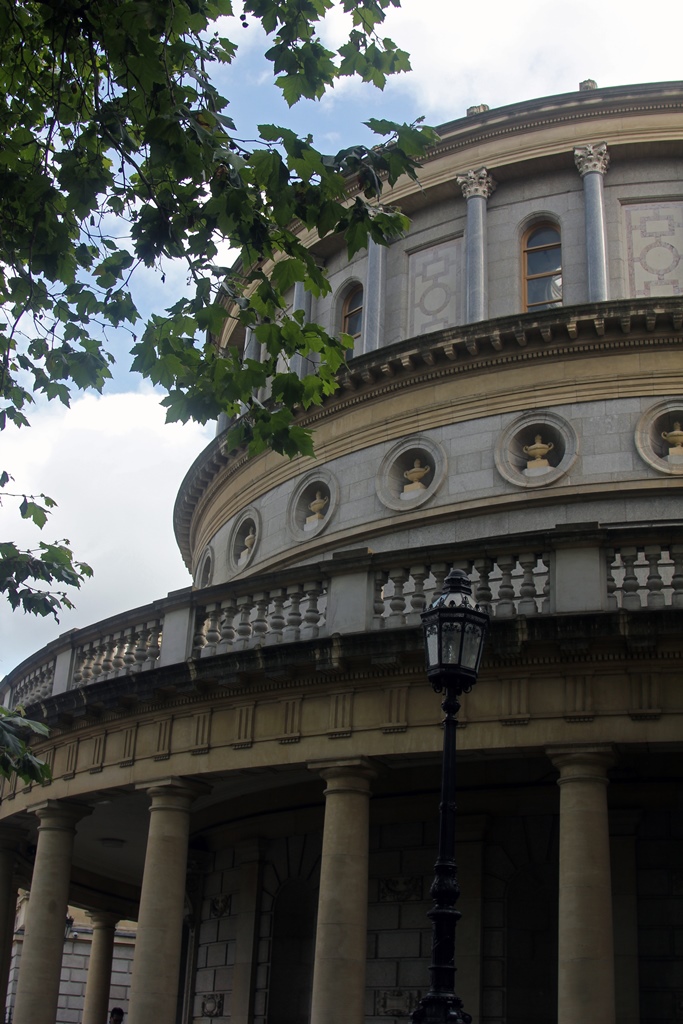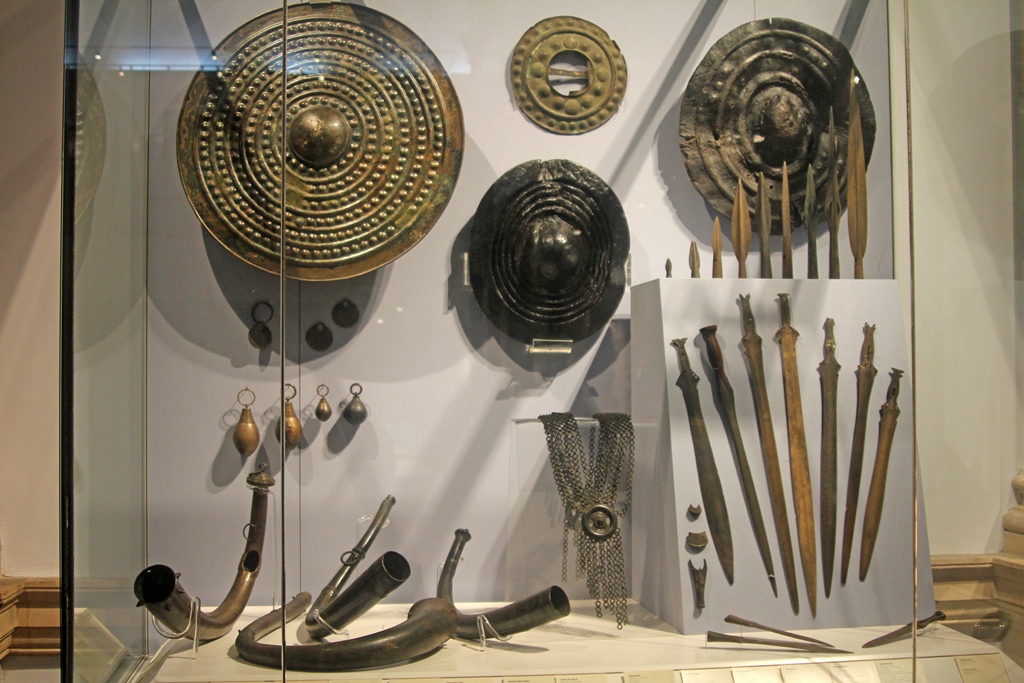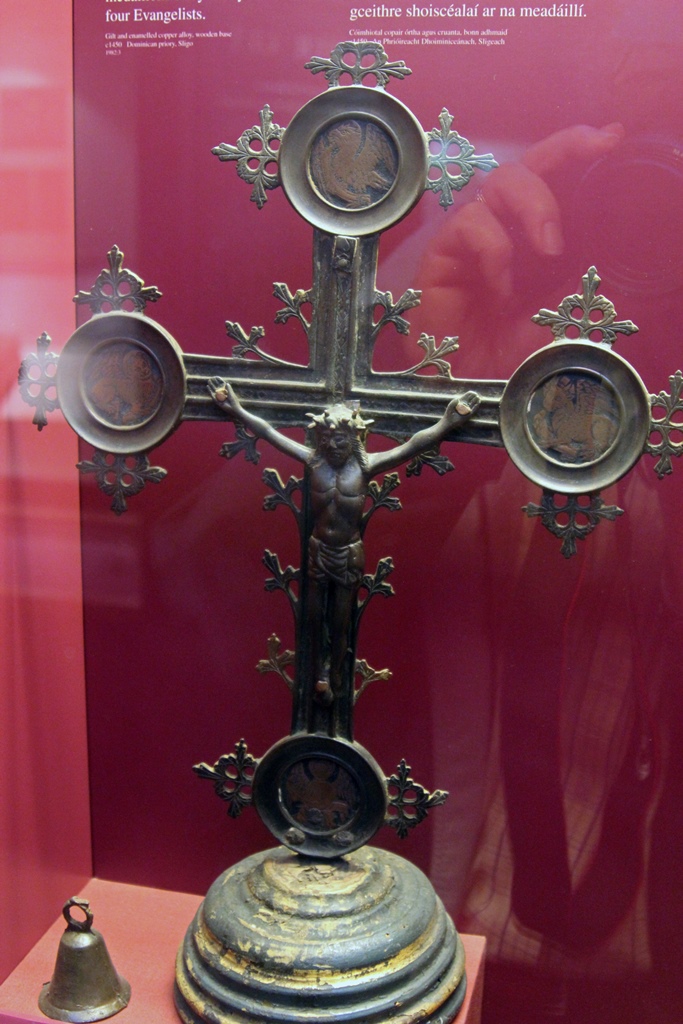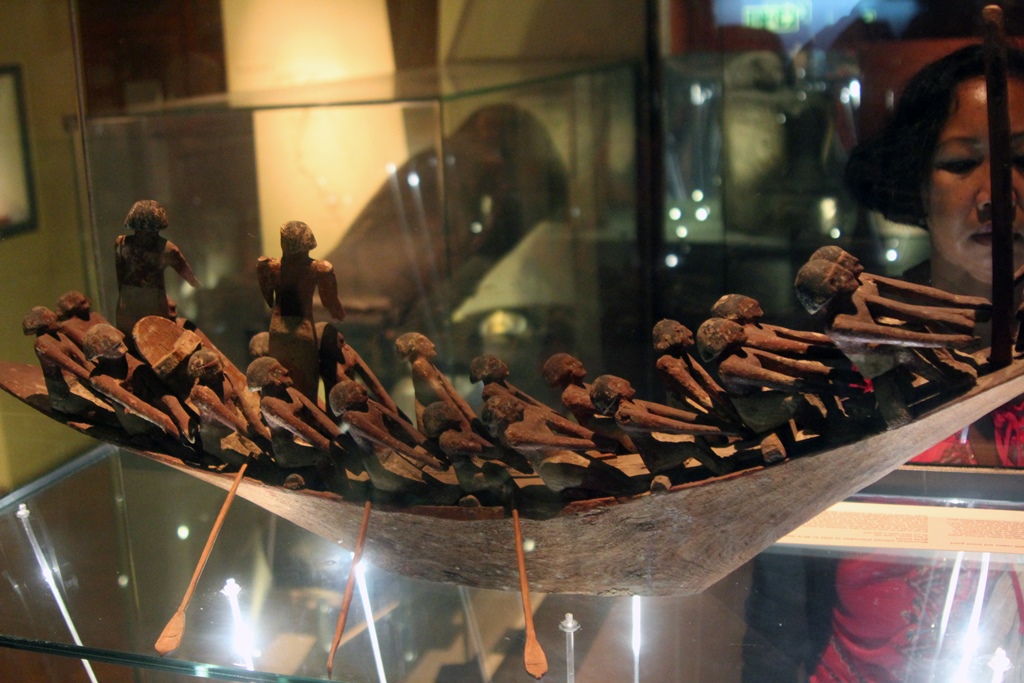Museum Building
The National Museum of Ireland's archaeology facility
holds the bulk of the Irish
Antiquities collection. Mostly these are articles from Ireland's history and pre-history,
but there are also displays of objects from other parts of the world (Egypt in
particular). The building dates from 1890, and was originally built to house and display
the collections of the Royal Dublin Society (absorbed when the National Museum of Ireland
was established in 1877).
Getting to the facility took us through Dublin's Temple Bar district, an area set up as a
cultural district in the 1980's and 90's. Prior to this time the area was at times a
center of prostitution and urban decay, and in the 1980's Ireland's state-owned transport
company planned to demolish some of the buildings and build a bus terminus. But while
preparations were being made for this operation, some of the buildings were rented out
cheaply to artists and small shops, and the area turned into something entirely different.
In addition to its cultural attractions, Temple Bar is a popular nightlife area, featuring
several well-visited pubs.
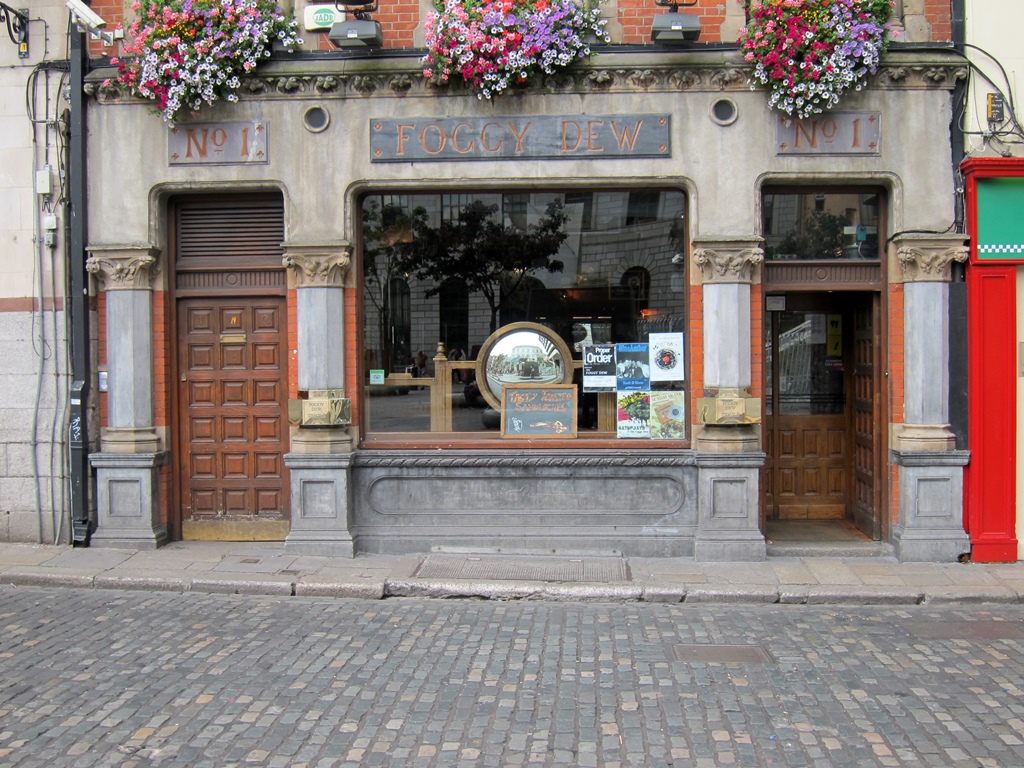
Foggy Dew Pub, Temple Bar
Ireland's historical record is considered to have started about when Christianity
arrived on the island, around 400 A.D. Prior to this time, settlements on the island
seem to go back to around 8000 B.C., after the glaciers of the Ice Age had receded.
Stone tombs from the next few thousand years were sources of many artefacts.
Artefacts became more sophisticated with the arrival of metallurgy during the Copper,
Bronze and Iron Ages, from 2500 B.C. until the end of the prehistoric era in 400 A.D.
And as it turned out, Ireland had an uncommonly abundant supply of naturally-occurring
gold, which was manhandled into surprisingly elaborate and artistic personal
ornamentations during this period. One such ornamentation, known as a torc,
includes a thin gold ribbon, twisted into a spiral shape.
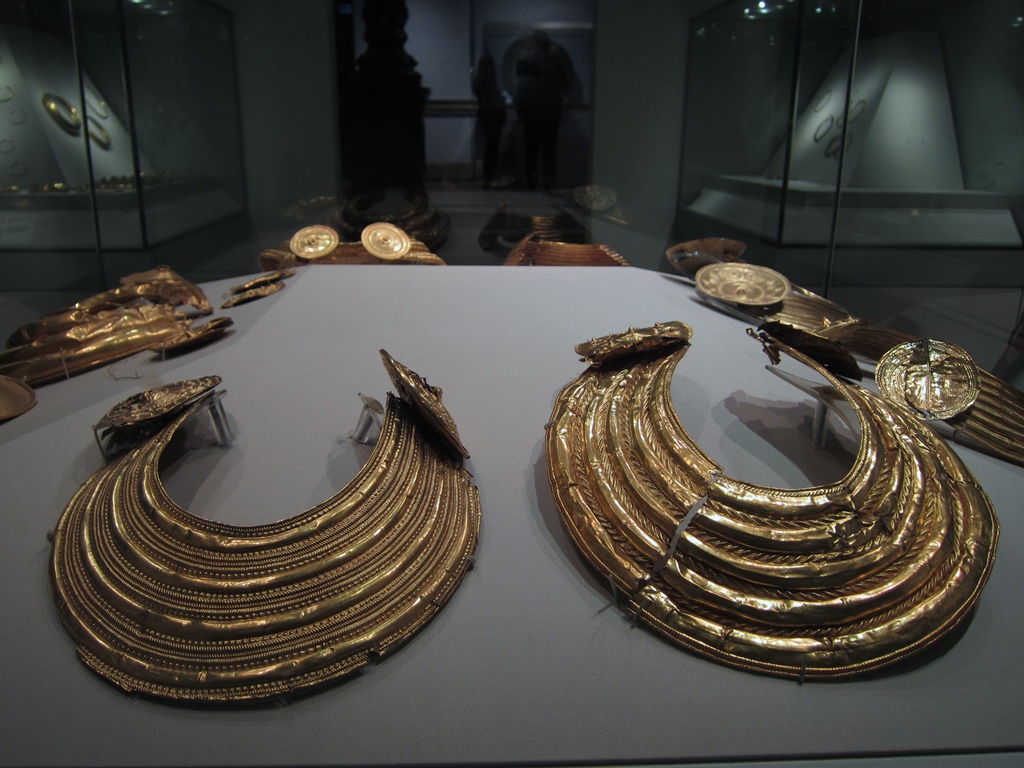
Gold Collars (800-700 B.C.)
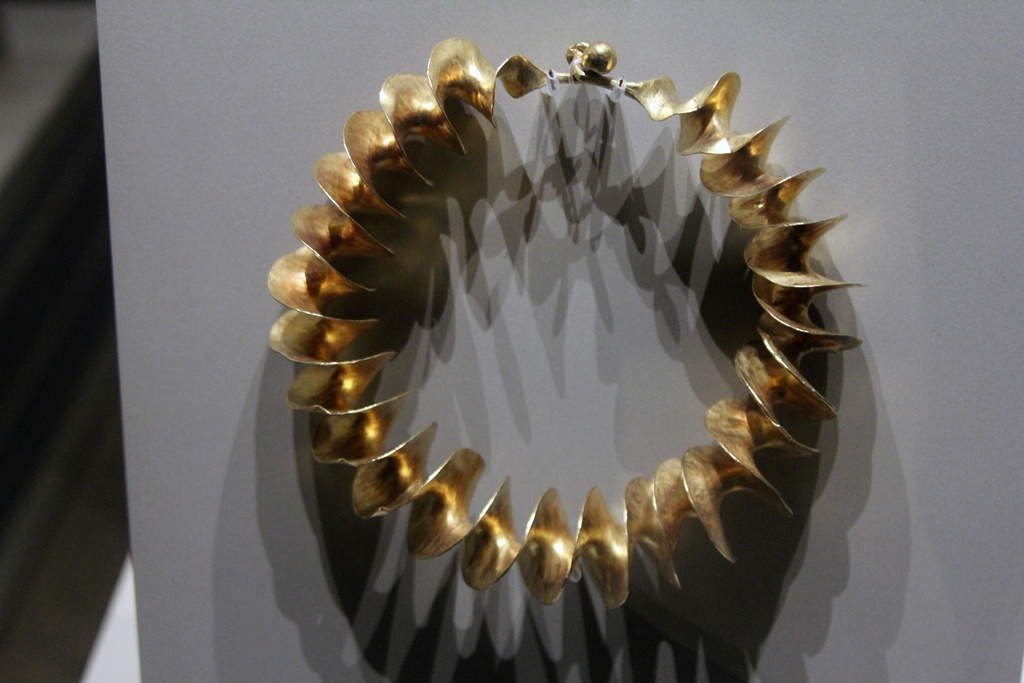
Gold Ribbon Torc (3rd C. B.C.-3rd C. A.D.)
Horns, Shields, Spear Heads, etc.
Artefacts produced after 400 A.D. generally had Christian themes. These included
carved stone objects and objects made from precious metals. The latter were welcomed
by the Vikings, who arrived in the 8th Century and gladly looted them from churches
and monasteries. But the Vikings did bring a great deal of silver into Ireland, and
much of it found its way into decorative objects (brooches were particularly
popular), as did some Viking designs.
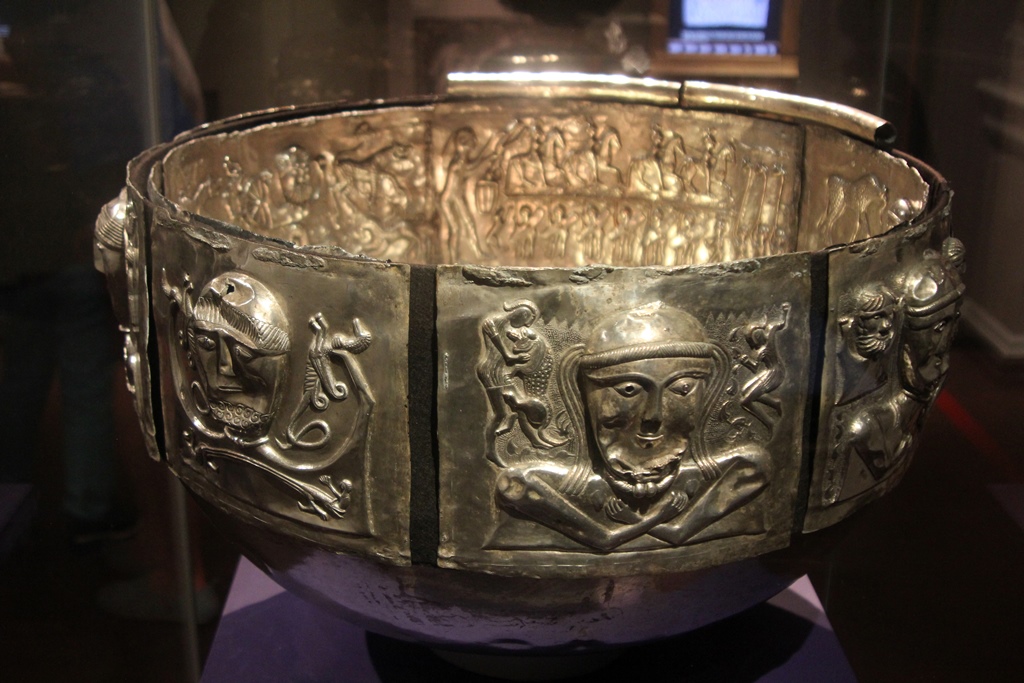
Decorated Bowl
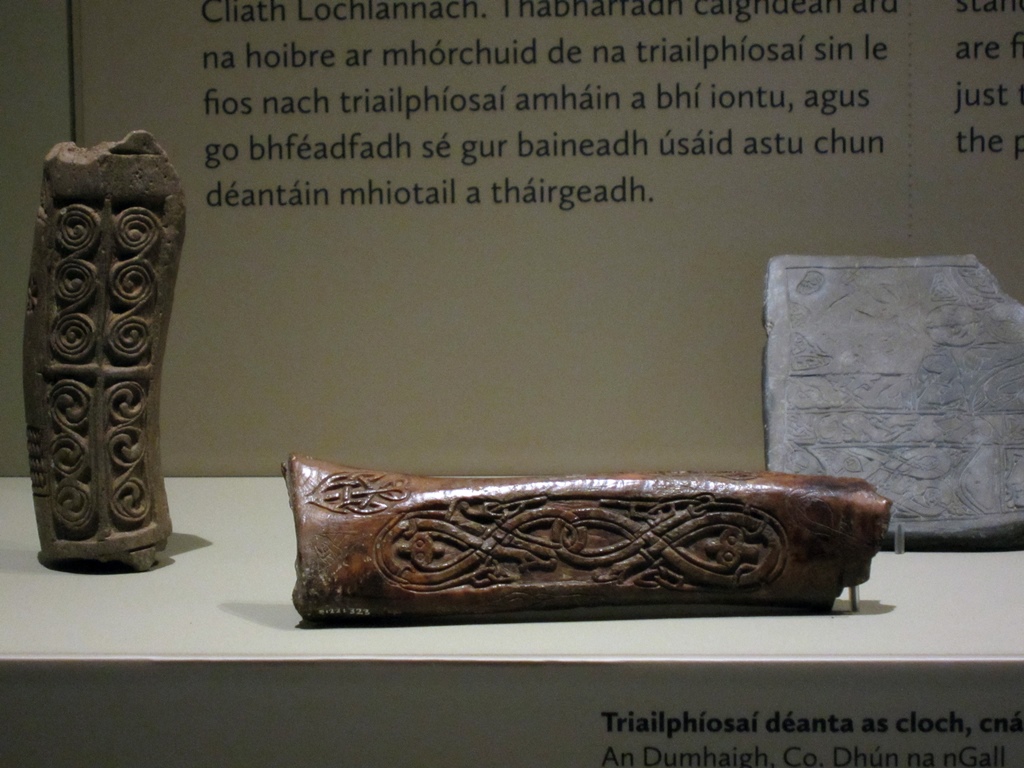
Carved Bones (5th-11th C.)
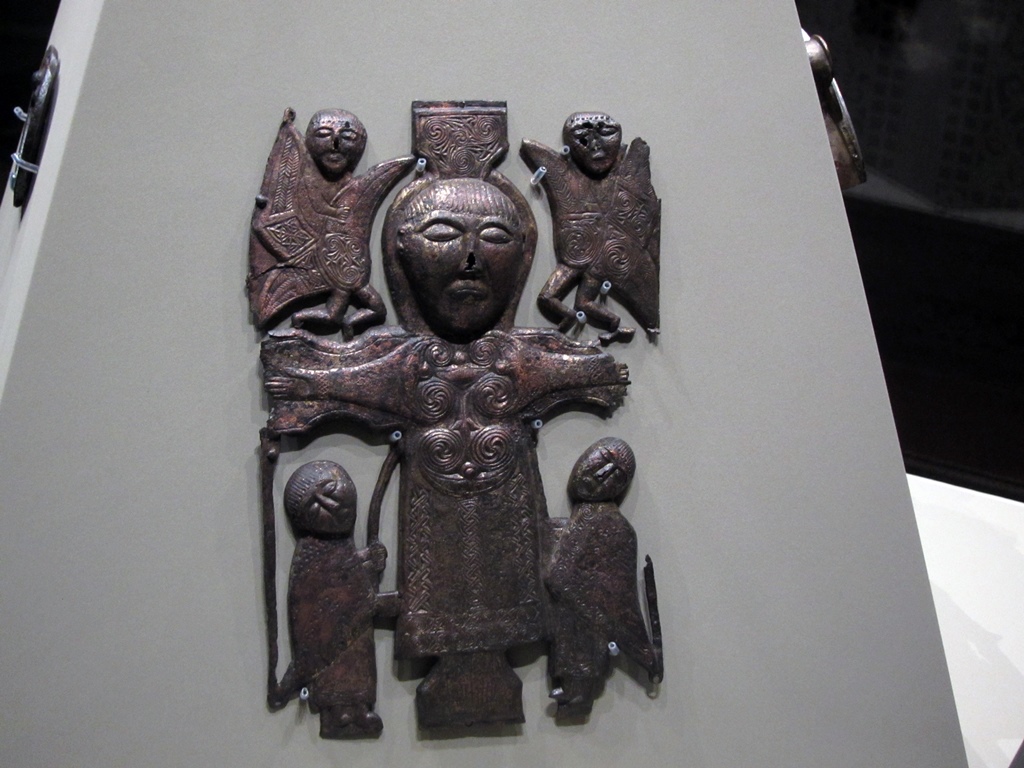
Bronze Crucifixion Plaque (8th C.)
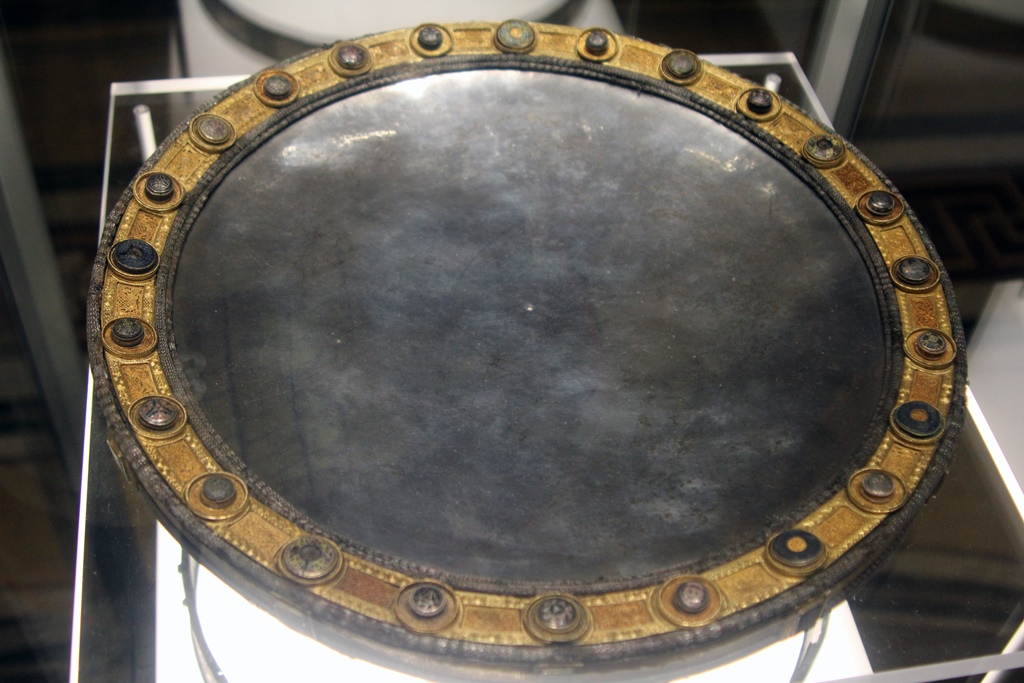
Derrynaflan Silver Paten and Bronze Stand (8th C.)
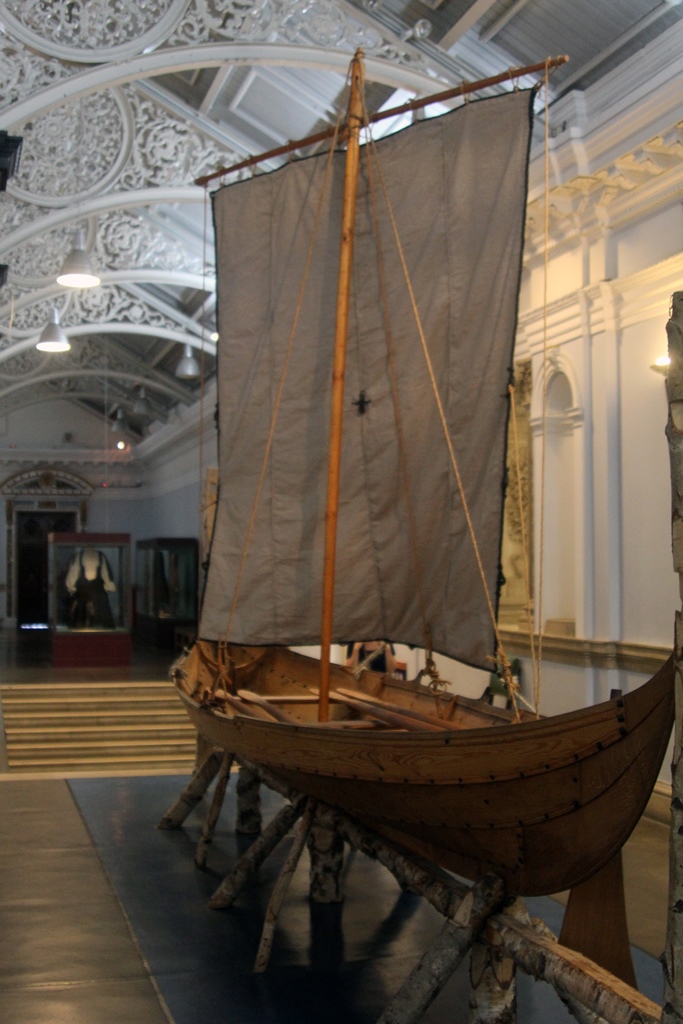
Viking Fishing Vessel (replica)
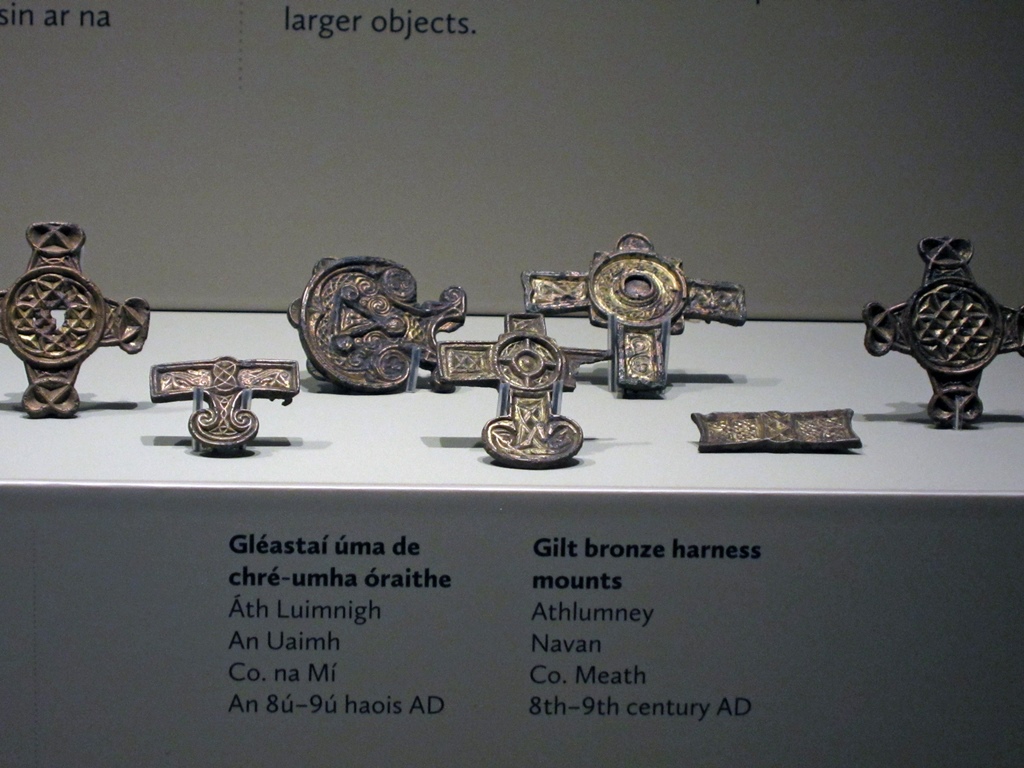
Gilt Bronze Harness Mounts (8th-9th C.)
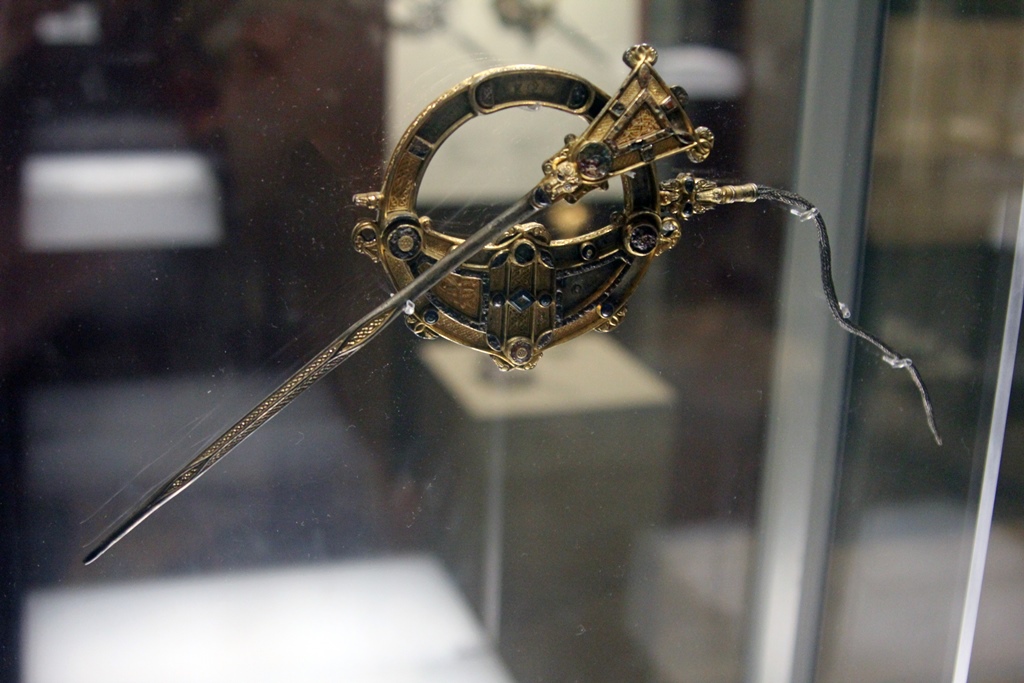
The Tara Brooch (8th C.)
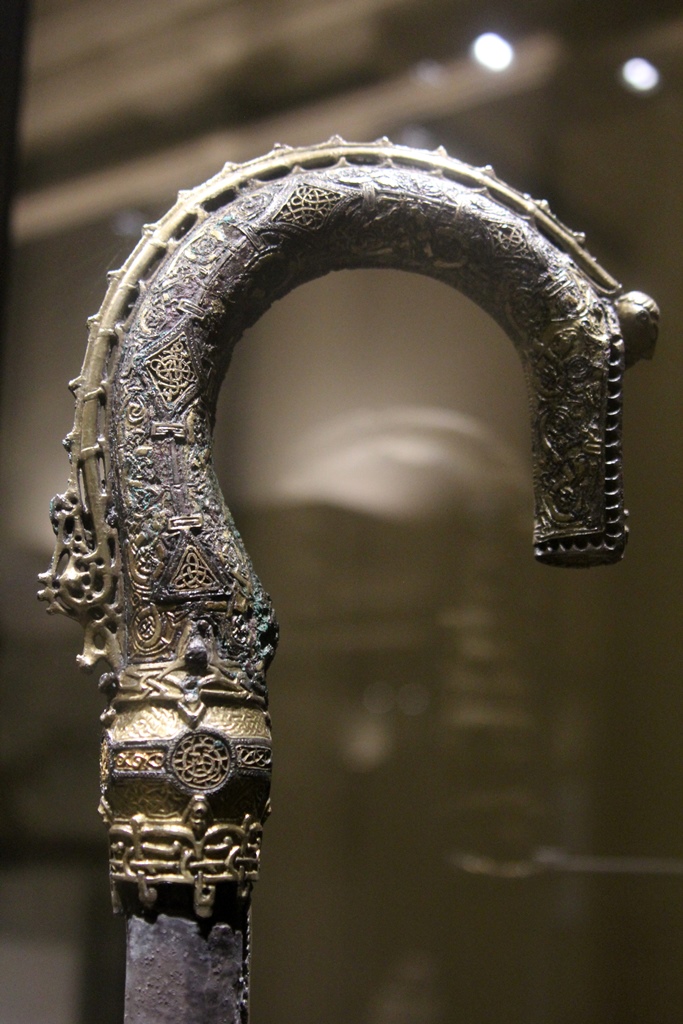
Crozier
The late medieval period began in the 12th Century, at which time there were church
reforms (initiated by Pope Gregory VII) and new invaders, this time Normans invading
from Britain (including Strongbow, briefly discussed on the
Christ Church page).
During this time religious imagery in decorative objects continued, though methods
and styles evolved. Many religious objects were created for the purpose of
containing holy relics. Pottery manufacturing became more established during this
period.
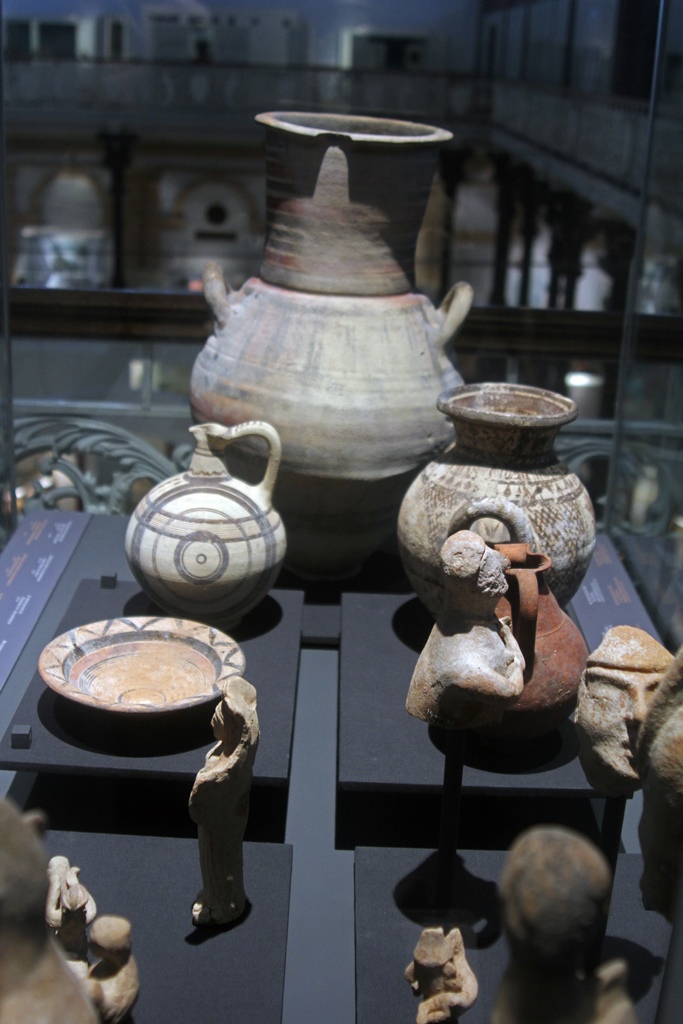
Pottery
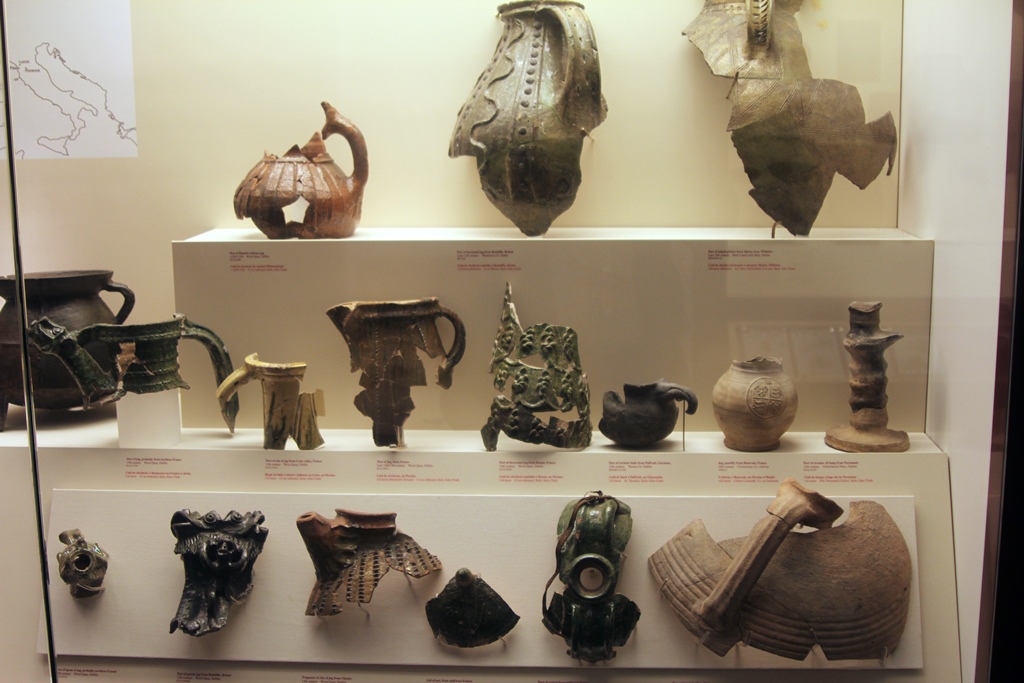
Pottery Fragments (various centuries)
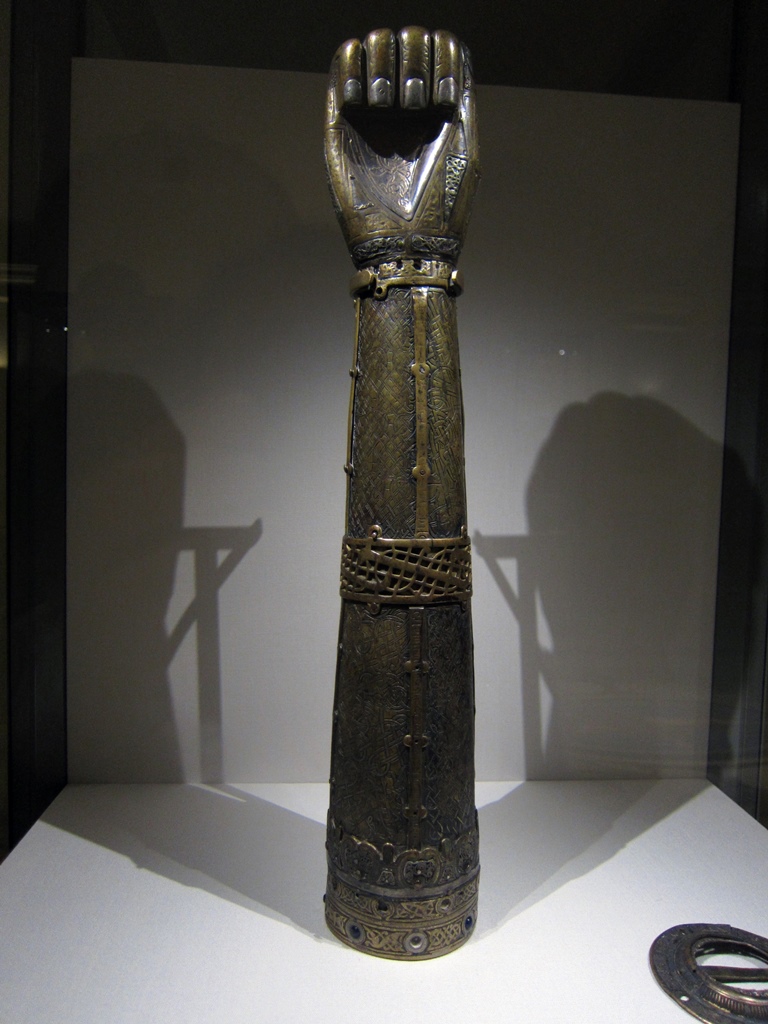
Shrine of St. Lachtin's Arm (1120 A.D.)
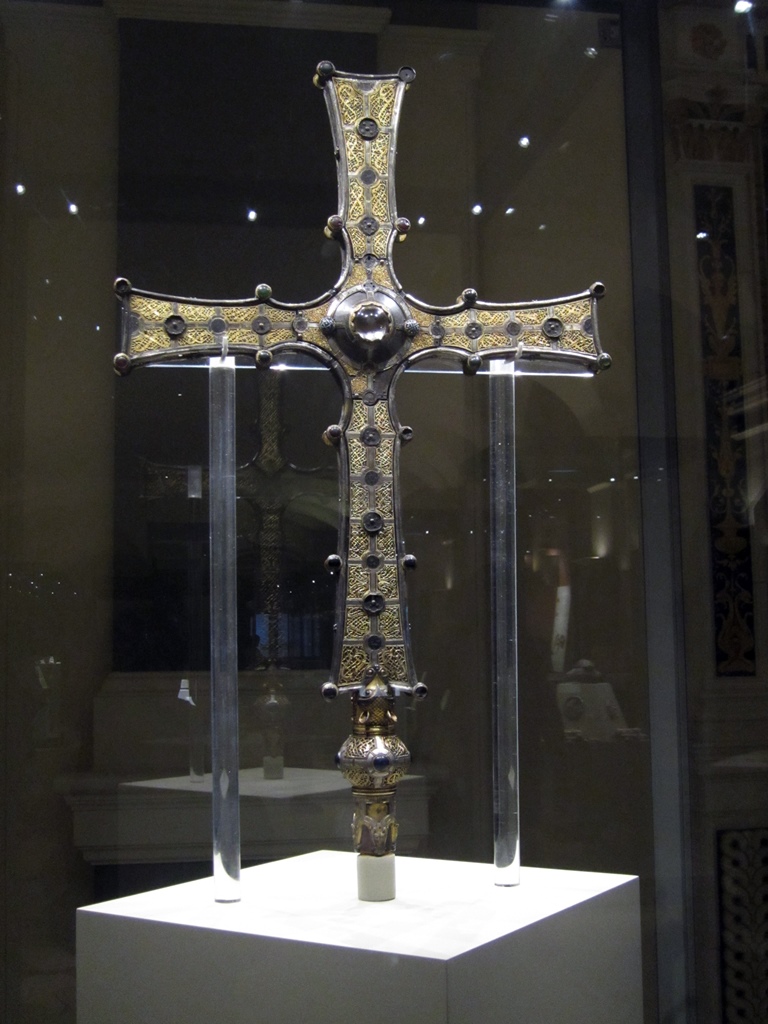
The Cross of Cong (1123 A.D.)
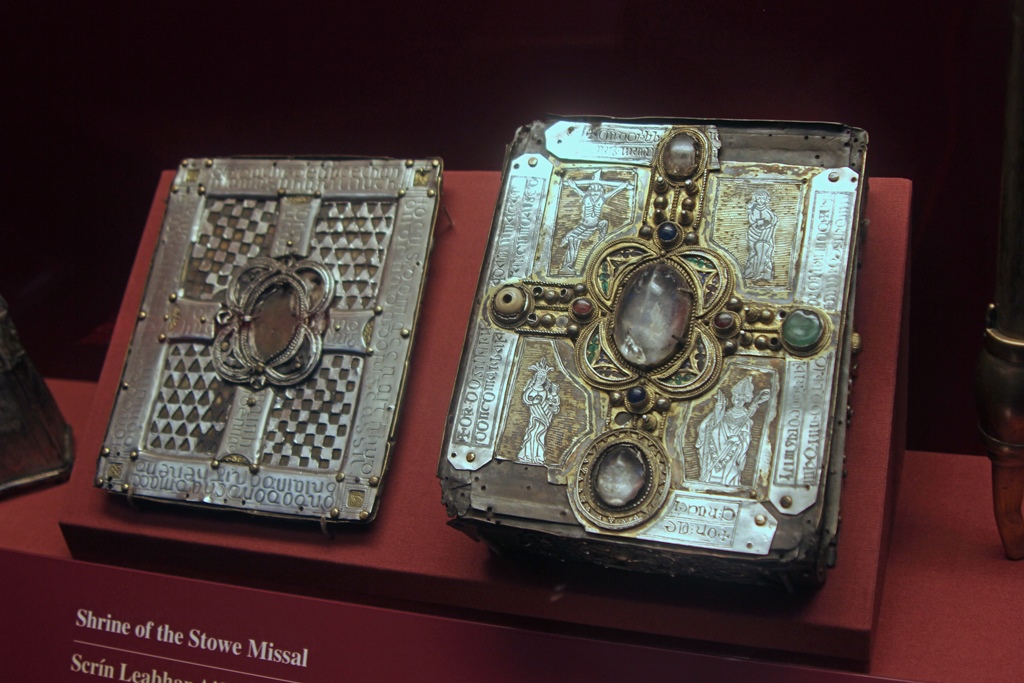
Shrine of the Stowe Missal (11th-14th C.)
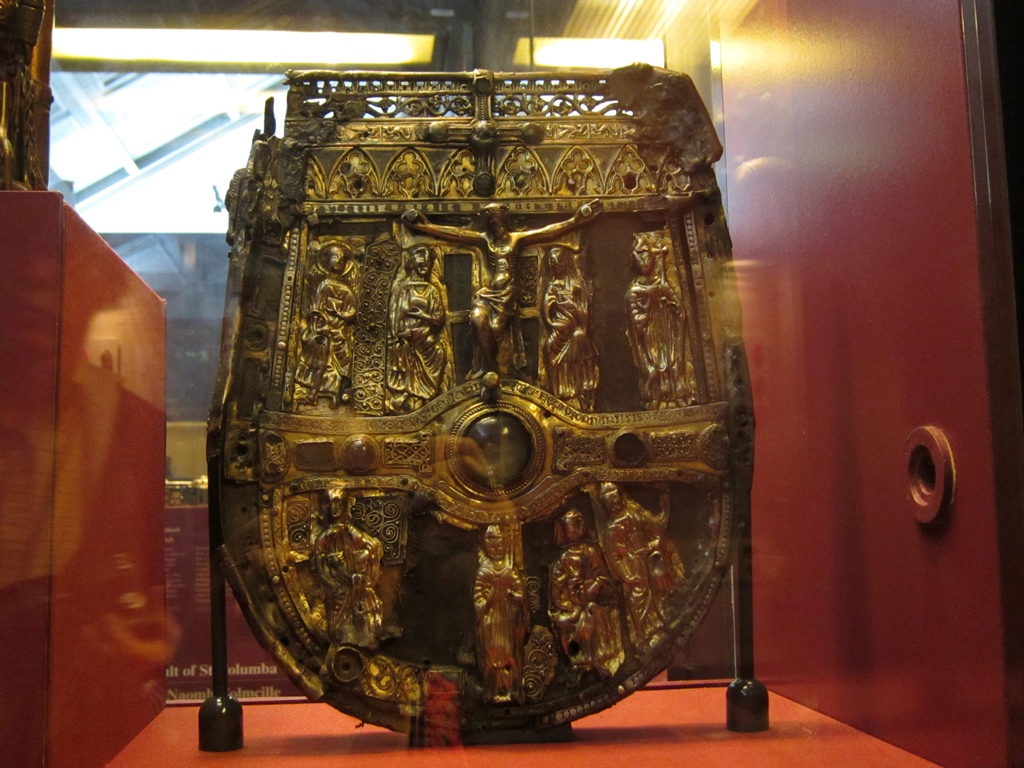
Shrine of St. Patrick's Tooth (14th C.)
Gilt Cross with Evangelists (ca. 1450)
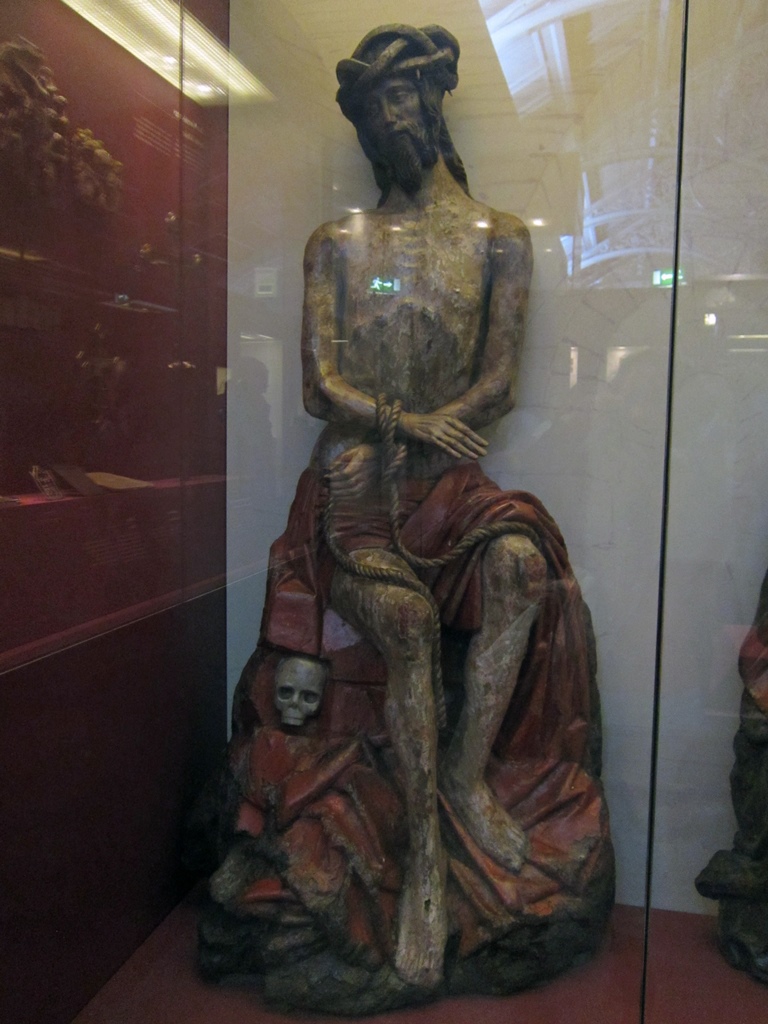
Christ in Sorrows (15th C.)
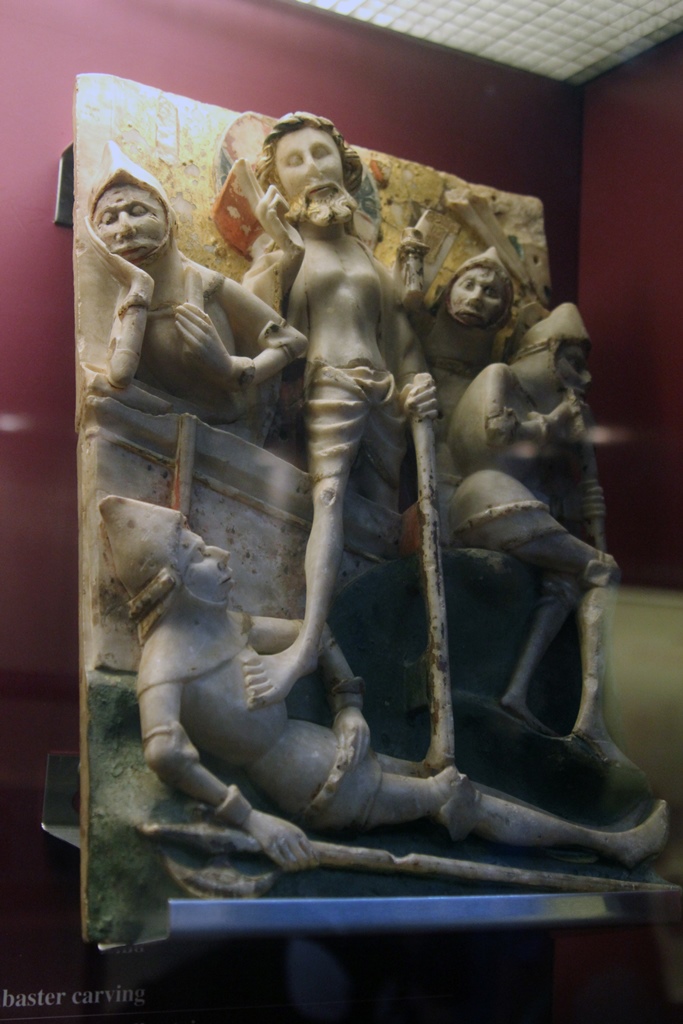
Relief of Jesus with Sleeping Guards
Upstairs in the museum is a collection of Egyptian antiquities, mostly excavated in
Egypt in the late 19th and early 20th Century. There's nothing particularly Irish
about them, but they definitely qualify as objects of archaeological interest, so
this is where they're displayed.
Nella and Wooden Egyptian Boat Model
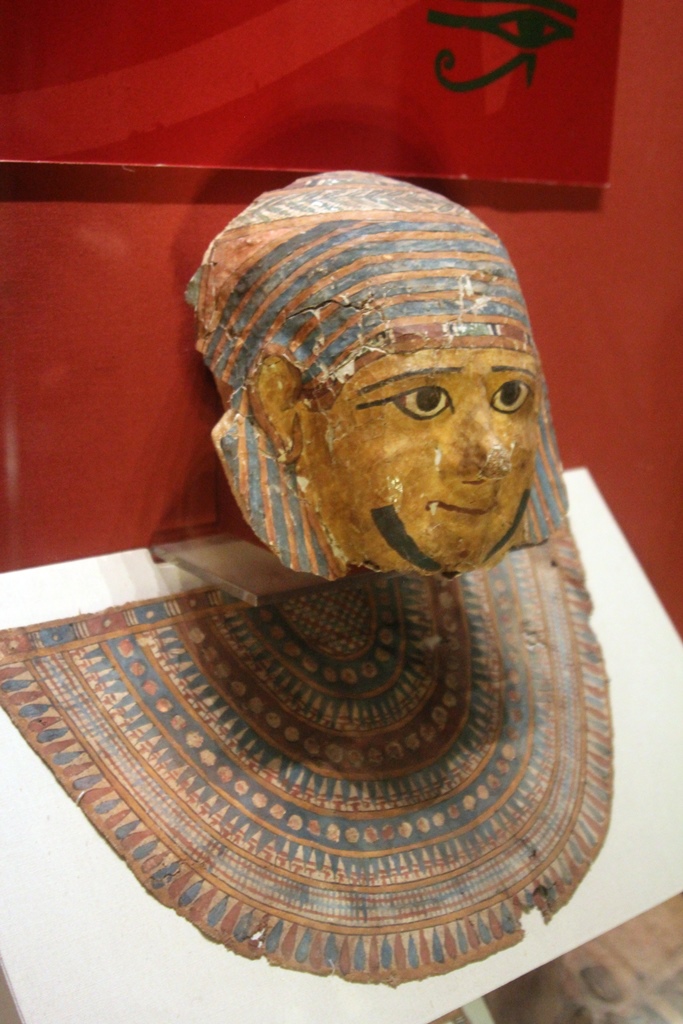
Egyptian Death Mask
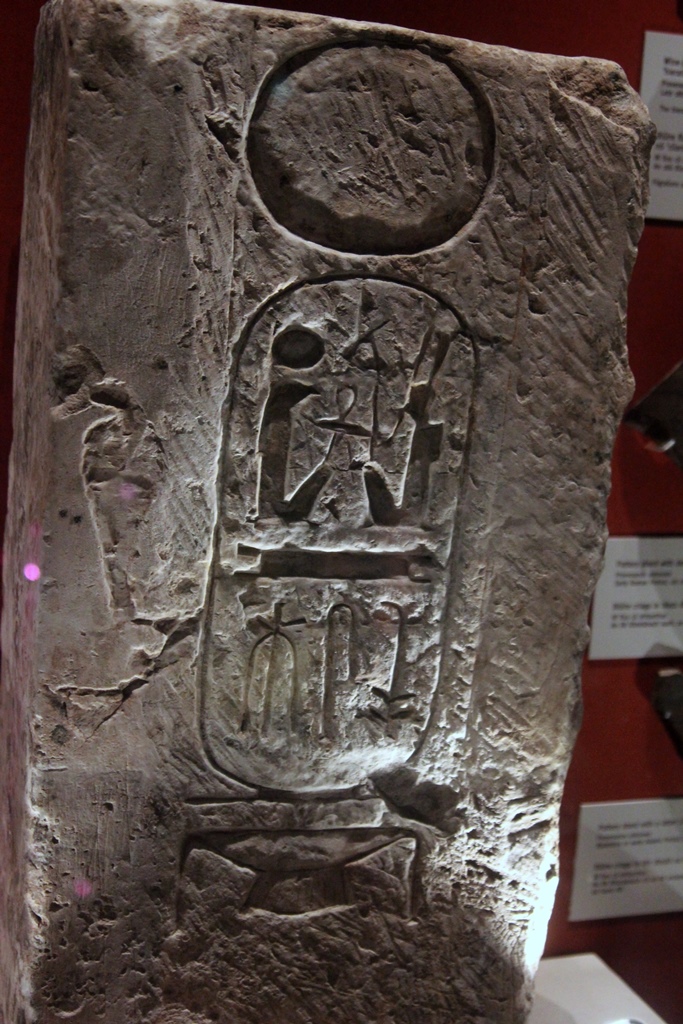
Stone Tablet with Hieroglyph
By this point, Nella and I were ready to return to the hotel room and take a nap,
while awaiting Philip's return from wherever he'd gone. This turned out to include
a point of great interest to many Dublin visitors (but not really to Nella and me),
the Guinness Storehouse.

